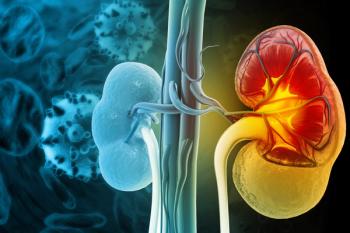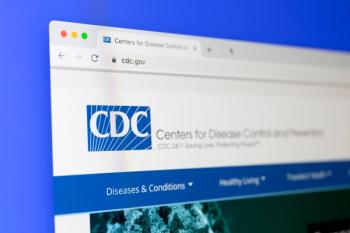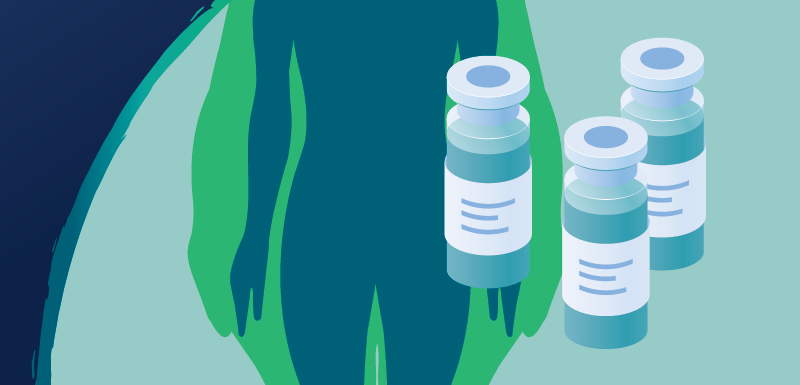
- November 2025
- Volume 91
- Issue 11
Prevent Misuse and Abuse of OTC Medications
Key Takeaways
- OTC medications are vulnerable to misuse due to low cost, legal availability, and perceived safety, leading to potential addiction and toxicity.
- Misuse is prevalent among adolescents and older adults, driven by factors like poor health literacy, cognitive decline, and unsupervised use.
Proactive Monitoring and Patient Education Are Key Roles for Pharmacists
OTC medication availability allows patients to access a variety of medications for self-treating common ailments like headaches, colds, coughs, heartburn, and musculoskeletal pain. When used correctly and without contraindications, OTC drugs are safe and effective. However, clinical evidence indicates that misuse and abuse of these drugs, including natural or herbal products, can lead to serious adverse effects such as addiction, toxicity, and even death.1,2
Research indicates that OTC drugs are especially vulnerable to misuse and abuse because of their low cost, legal availability, widespread access, and few regulatory restrictions on age or purchase quantity.3,4 Easy access often leads to the mistaken belief that OTC drugs are completely safe, potentially causing improper use. Additionally, many people do not regularly inform their health care providers about their OTC use, leading to a lack of awareness about possible risks.3,4 As a result, this can cause misdiagnosis, improper dosing, dependency from extended use, adverse reactions, and harmful drug interactions.3,4
According to the National Institute on Drug Abuse, misuse and abuse of OTC drugs may include taking the medication in a manner or dosage different from the instructions provided by the manufacturer; consuming medication for the effects it produces, such as euphoria; and combining OTC medicines to create new products.2
Although some misuse and abuse of OTC drugs is intentional, unintentional misuse of OTC drugs can occur due to poor health literacy, confusing labels, and the belief that these medications are risk-free. People may take incorrect doses, combine products with overlapping ingredients, or self-medicate without understanding the risks.4-7
Examples of commonly misused and abused OTC drugs include dextromethorphan, antihistamines, sleep aids, caffeine-containing products, analgesics, and pseudoephedrine.1-4 In addition, OTC products marketed for weight loss, such as diet pills, laxatives, and diuretics, are frequently misused, particularly among adolescents and young adults.1-4 Laxatives are often taken inappropriately for weight loss or control, whereas high doses of antihistamines may be consumed to induce euphoric effects.1-4
Clinical Studies and Recent News
A cross-sectional study examining self-medication practices with OTC medications among adolescents found a high prevalence of unsupervised use, often driven by convenience, perceived safety, and lack of awareness about potential risks. The authors emphasized the need for targeted education and stronger regulatory measures to reduce misuse and promote safer self-care behaviors among youth. The findings were published in Frontiers in Public Health.4
Similarly, study findings published in Hospital Pharmacy explored the increased misuse and abuse of OTC drugs during the COVID-19 pandemic. It revealed that fear, misinformation, and limited access to health care services led individuals to self-medicate with OTC drugs, often without proper guidance. The authors underscored the need for stronger public education and pharmacist-led interventions to mitigate the risks associated with unsupervised OTC drug use during public health crises.5
A narrative review published in the European Journal of Public Health further examined factors contributing to OTC drug misuse among young people. It identified influences such as peer pressure, lack of risk awareness, easy accessibility, and the perception that OTC drugs are safer than prescription medications. The authors stressed the importance of targeted education, parental involvement, and policy interventions to curb misuse and encourage safer practices among youth.6
In older adults, a study published in Innovation in Aging highlighted the high prevalence and multifactorial nature of OTC drug misuse among older adults. Key contributors included polypharmacy, cognitive decline, and limited health literacy, all of which increase the risk of inappropriate dosing, therapeutic duplication, and adverse drug interactions. These findings highlight the urgent need for pharmacist-led medication reviews, improved patient education, and clearer OTC labeling to enhance medication safety in geriatric populations.7
Finally, a publication in Current Neuropharmacology reported that misuse of OTC antihistamines, cough medicines, and decongestants, especially at high doses, can trigger psychotic symptoms, highlighting a serious but often underrecognized public health risk.8
The Role of the Pharmacist
Pharmacists have multiple roles in promoting the safe and proper use of OTC drugs. During patient counseling, pharmacists should provide patients with information about appropriate dosing, duration of use, and potential drug interactions or contraindications, especially when patients are managing multiple conditions or using other medications.
Given the extensive availability and perceived safety of OTC products, many underestimate their potential for misuse and abuse, which can lead to adverse outcomes such as toxicity, dependency, or delayed treatment. By expanding awareness and promoting the safe use of OTC drugs, pharmacist-led patient education initiatives have the potential to mitigate these risks associated with misuse and abuse. When used appropriately, OTC medications offer effective relief from a variety of minor ailments, and pharmacist recommendations empower patients to make informed, responsible decisions about their self-care. The Table includes resources for promoting safe OTC medication use.
REFERENCES
Algarni M, Hadi MA, Yahyouche A, Mahmood S, Jalal Z. A mixed-methods systematic review of the prevalence, reasons, associated harms and risk-reduction interventions of over-the-counter (OTC) medicines misuse, abuse and dependence in adults. J Pharm Policy Pract. 2021;14(1):76. doi:10.1186/s40545-021-00350-7
Over-the-Counter Medicines DrugFacts. National Institute on Drug Abuse. December 2017. Accessed October 8, 2025.
https://nida.nih.gov/publications/drugfacts/over-counter-medicines Over-the-Counter Medicine Safety Guide. Johnson & Johnson. Accessed October 8, 2025.
https://www.cadca.org/wp-content/uploads/2023/05/otc_medicine_safety_resource_guide-3.pdf Al Meslamani AZ, Abdel-Qader DH. The abuse and misuse of over-the-counter medicines during COVID-19. Hosp Pharm. 2023;58(5):437-440. doi:10.1177/00185787231158777
Ma C, Zhang H. A cross-sectional study on self-medication with over-the-counter drugs among adolescents: an analysis of current practices. Front Public Health. 2025;13:1560299. doi:10.3389/fpubh.2025.1560299
Tushar MI, Kersbergen I. Factors associated with over-the-counter drug misuse among young people: a narrative review. Eur J Public Health. 2024;34(suppl 3):ckae144.1671. doi:10.1093/eurpub/ckae144.1671
Chladek JS, Gilson AM, Stone JA, et al. The high prevalence and complexity of over-the-counter medication misuse in older adults. Innov Aging. 2024;8(10):igae083. doi:10.1093/geroni/igae083
Mosca A, Chiappini S, Mancusi G, et al. Over-the-counter psychosis: a systematic review of the misuse of antihistamines, cough medicines, and decongestants and the risk of developing psychosis. Curr Neuropharmacol. 2025;23(8):956-973. doi:10.2174/011570159X344365250114064248
Articles in this issue
28 minutes ago
OTC Case Studies: Common Cold2 days ago
November 2025 Trending Products4 days ago
November 2025 Pharmacy Policy Updates7 days ago
Start With the Vision, Not the NumbersNewsletter
Stay informed on drug updates, treatment guidelines, and pharmacy practice trends—subscribe to Pharmacy Times for weekly clinical insights.












































































































































































































